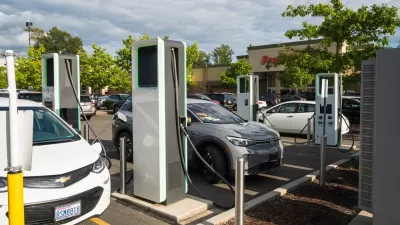The Financial Times analyzes the effects of the falling price of oil on energy markets and concludes that the short term economic gain for oil consumers will come back to bite them as investments in alternative fuels will cease as will conservation.
"The plunging oil price is like a dangerously addictive painkiller: short-term relief is being provided at a cost of serious long-term harm.
It took more than four years for oil to go from $35 per barrel in 2004 to over $147 in July 2008, and less than six months to fall all the way back again.
More expensive forms of oil such as Canada's tar sands, and alternatives to oil, such as biofuels, are at risk.
Cheaper oil and other forms of energy also weaken the incentive for businesses and consumers to use fuel more carefully.
It is not only transport fuels, which compete directly with crude oil, that are affected. The price of oil is tied to the price of natural gas – formally by contract in some regions such as the European Union and Japan, informally elsewhere – so the price of gas has also fallen sharply.
That throws into doubt the economics of forms of generation that compete with gas, including nuclear, renewables such as wind and solar, and coal."
"Analysts such as Philip Gordon of the Brookings Institution have argued that Washington should set an oil price floor of $60 per barrel to give investors the certainty to invest in alternatives, but that idea faces practical hurdles. Higher petrol taxes – common in Europe – could encourage fuel efficiency and electric cars in the US, but are also highly controversial."
From The Washington Post op-ed - Charles Krauthammer, "Tax & Drill":
"The idea is for the government -- through a tax -- to establish a new floor for gasoline, say $3 a gallon. If the world price were to rise above $3, the tax would be zero."
FULL STORY: Over a barrel

Planetizen Federal Action Tracker
A weekly monitor of how Trump’s orders and actions are impacting planners and planning in America.

Maui's Vacation Rental Debate Turns Ugly
Verbal attacks, misinformation campaigns and fistfights plague a high-stakes debate to convert thousands of vacation rentals into long-term housing.

Restaurant Patios Were a Pandemic Win — Why Were They so Hard to Keep?
Social distancing requirements and changes in travel patterns prompted cities to pilot new uses for street and sidewalk space. Then it got complicated.

In California Battle of Housing vs. Environment, Housing Just Won
A new state law significantly limits the power of CEQA, an environmental review law that served as a powerful tool for blocking new development.

Boulder Eliminates Parking Minimums Citywide
Officials estimate the cost of building a single underground parking space at up to $100,000.

Orange County, Florida Adopts Largest US “Sprawl Repair” Code
The ‘Orange Code’ seeks to rectify decades of sprawl-inducing, car-oriented development.
Urban Design for Planners 1: Software Tools
This six-course series explores essential urban design concepts using open source software and equips planners with the tools they need to participate fully in the urban design process.
Planning for Universal Design
Learn the tools for implementing Universal Design in planning regulations.
Heyer Gruel & Associates PA
JM Goldson LLC
Custer County Colorado
City of Camden Redevelopment Agency
City of Astoria
Transportation Research & Education Center (TREC) at Portland State University
Jefferson Parish Government
Camden Redevelopment Agency
City of Claremont




























